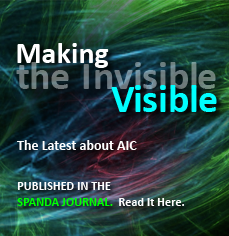Library
COLLABORATING FOR RESILIENCE: Practitioner Guide
In many countries, resource conflict is a leading risk to livelihoods. For some communities, it is a matter of survival. Yet, many development interventions aiming to address these challenges fail or fall far short of their potential. Common reasons include conflicting agendas, power and politics; poor local commitment and leadership; lack of coordination; plus high costs and low sustainability, as programs often unravel when development finance ends. Overcoming these obstacles requires a shift from typical approaches to planning, implementing and evaluating rural development and natural resource management initiatives. This manual introduces one approach to achieving such breakthroughs in collective action, called "Collaborating for Resilience.” The manual presents a set of principles and field-tested guidance on exploring the potential for collaboration, facilitating dialogue and action, evaluating outcomes, and sustaining collaboration over time.
PRIME MOVERS: Define Your Business or Have Someone Define it Against You
In this book—available through Amazon by clicking on the title above—Ramirez and Wallin use AIC to explain, in Chapter 7, the new actor-centered, market-making strategies of "Prime Movers" such as VISA, Nokia and the Swedish Packaging Company Akerlund and Rausing.
Ramirez and Wallin take the same stance to business as AIC does to the organizing process at any level. We must move our level of attention from control-centered strategies to influence-centered strategies. When we do we will automatically invoke the appreciative-centered perspectives that are necessary for influence-centered organization.
"Offerings reverse the ground of attention to which strategists have given priority. Instead of actors, interactions should be considered as the focus. Instead of companies, it is relationships. Instead of positioning within a given context, it is the enlarging and redefining environments which can deliver more effective companies, helping their customers to become more effective creators, ultimately making up better value constellations."
BUILDING PARTNERSHIPS BETWEEN GOVERNMENT AND CIVIL SOCIETY: The Case of Paiboon Wattanasiritham and the Governmental Central Bank
This article tells the story of Khun* Paiboon and his role in encouraging the application of AIC as a transformational process at village level and ultimately up to the level of the national government itself.
Most significantly, it resulted in changes to sections 45 to 47 of the 1997 Constitution which stated that the people have a right to organize themselves to conserve or restore their customs, local knowledge, arts or good culture of their community and of the nation and participate in the management, maintenance, preservation, and exploitation of natural resources and the environment.
*Kuhn is a title of deep respect.
http://www.synergos.org/bridgingleadership/04/c_5_case_study_khun_paiboon_wattansiritham
_thailand.pdf.
GENERATING SHARED VISIONS FOR COMMUNITY DEVELOPMENT IN SOUTHEAST ASIA: The AIC Process
Center for International Education
djmacnei@educ.umass.edu
James's article tells the story of one of the most extensive applications of AIC. From the training of thirty young people, the process spread through much of Thailand till it was used in 1996 by the Government to form the five-year national plan. It illustrates the self-organizing properties of the process and how the Thais were able to make it their own—or as they would describe it AIC, "Thai Style."
HEALTH PROMOTION FOR THAI GARMENT FACTORY WORKERS
Due to an increasing trend in non-communicable diseases (NCD) among people in developing countries, health promotion has played an important role in NCD prevention. Managerial improvement is one of the areas that need special consideration. Therefore, the main objective of the study was to develop a managerial health promotion system in the garment industry located in Bangkok Metropolis.
The methodology of the study was an action research which was divided into two main phases, including a baseline survey and health promotion activities among 30 textile businesses (weaving and garment manufacturers) in terms of individual health, environmental health and healthcare systems. It was found that workers had poor health knowledge and poor health behaviour, which can lead to an increase in personal illness and work absence. The environmental aspects were not supportive of a healthy atmosphere because the workplace had concentrated only on mandatory services. Therefore, a health promotion management system was developed using a system-approach model (a model focusing on the relationships within the five-system component of health promotion in the organization and the environment interaction) with full participation from all levels of staff in the situation analysis, decision-making, planning, implementation, evaluation and feedback.
The five components of health promotion system consist of management, resources, economic support, organizational structure and service delivery. These five components of the health promotion system were analyzed prior to implementation. The Appreciation, Influence and Control Process (AIC) was selected as an intervention to create overall participation.
The study suggests that an effective health promotion management system using the AIC process is a valuable tool of management in developing health promotion in the workplace. It uses full participation of employees according to the five-component system of the health promotion in their working environment. The designed comprehensive health promotion program (the combination of the Five Strategies of Ottawa Charter—namely, building healthy work policies, creating a supportive work environment, strengthening community action, developing personal skills and reorientation of occupational health as well as other health services) was effective and satisfactory to the employees. However, the success of the program greatly depends on the awareness, acceptance and support of the top management level and the staff's willingness to participate.
THE NEW DEVELOPMENT PARADIGM: Organizing for Implementation
In September 1993 ten countries sent delegations representing their governments, nongovernmental organizations, the private sector and academic communities to discuss implementing a new development paradigm with representatives from development assistance agencies. At the request of the project's sponsors—the governments of Japan and the Netherlands and the United Nations Development Programme (UNDP)—the project organizer, Organizing for Development, an International Institute (ODII), prepared a workshop report on which this chapter is based. This chapter was published in Development: New Paradigms and Principles for the Twenty-First Century (Rethinking Bretton Woods, Vol 2) by Jo Marie Griesgraber (Editor), Bernhard G. Gunter (Editor). The book can be obtained from Amazon.com by clicking on the title.
CASE ON PARTICIPATION IN THAILAND
Taguchi gives a briefer summary of the Thai experience with AIC.
WOMEN'S ORGANIZING ABILITIES: Two Case Studies of Kenya and Malawi
Aguilar and Birch de Aguilar carry out more classical research using AIC as a framework to understand male and female roles in matriarchal and patriarchal tribes in the two African countries.
PLANNING FOR THE ELECTRICITY SECTOR IN COLOMBIA
This article tells the story of the first application of AIC. It appeared in modified form as Chapter 17 in Marvin R. Weisbord's Discovering Common Ground: How Future... " Berrett and Koehler, 1992. By clicking on the title above you can obtain a copy from Amazon.com.
Transforming
Ourselves,
Our Organizations,
and Our World more..



